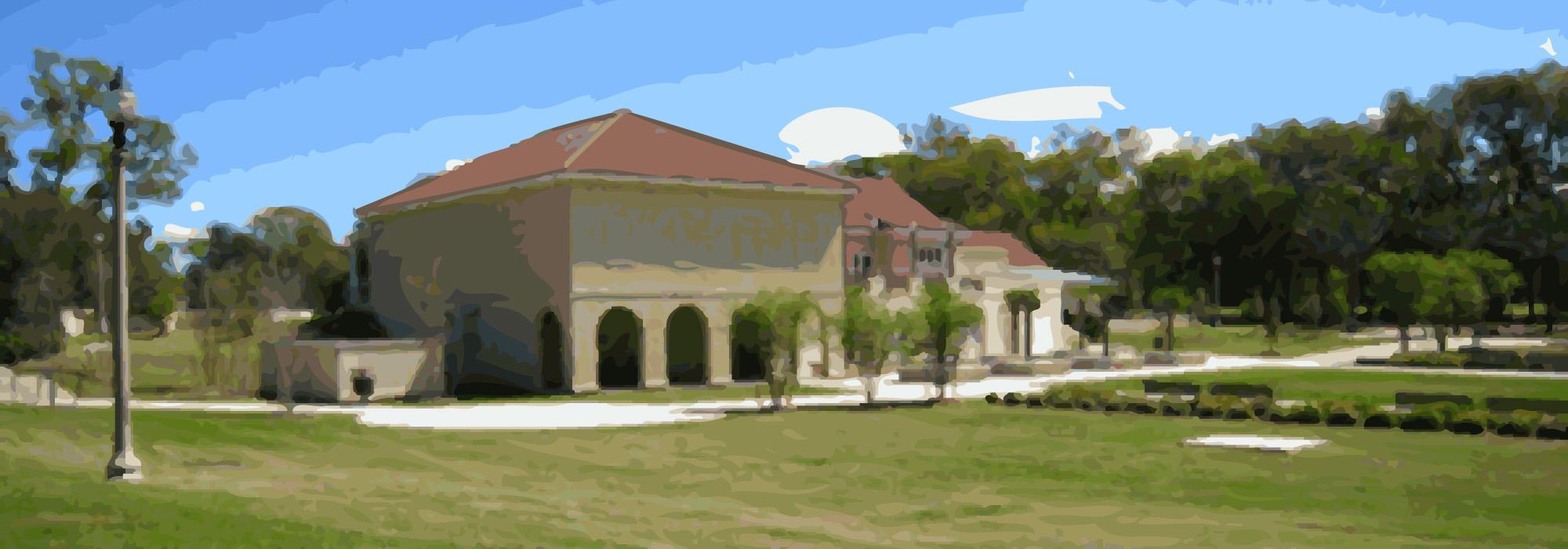It Takes One: Lillie Petit Gallagher
I was born in 1937 in Cut Off, a small French-speaking community on a bayou in south Louisiana, all of the little country farming and fishing towns, wide spots along Bayou Lafourche such as Cut Off, snuggled tightly along the bayou road. The bayou and the road snaked away from the Mississippi River through the small farming/fishing communities for more than 80 miles along a high ridge down to the Gulf of Mexico thirty miles south of Cut Off. These bayou settlements were founded in the early part of the 19th century. The 'forest' was cleared to make way for the farms and plantations that developed into the agricultural economy of the region. When I was growing up, sugar cane was the main crop. Just before the fall harvest, the fields resonated with the sound and sights of the rippling green stalks. Such was my country childhood which, unbeknownst to me, formed my initial sense of the importance of indigenous landscape.
Odd little pieces of left over 'forest' are still found here and there. For me they hold the memories of my childhood picnics, games and school outings which more than sixty plus years ago provided my introduction to the beauty and peacefulness of trees and cultural landscapes. Mostly pecan, oak, willow and gum, the trees sprouted from a forest floor filled with pink/fuchsia azalea and wild wisteria. This sparse 'forest' in marshy south Louisiana planted the first seeds for my life long 'romance' with trees and open spaces.
How would you define a cultural landscape?
My understanding of a cultural landscape was first informed by my 'country' environment ... and much later, in the waning years of my sixth decade of life, it was professionally defined in Pioneers of American Landscape Design, a book with which I became acquainted through a mail-order book club. Its editor, Charles Birnbaum, became my 'teacher' and friend. I came to know that a 'cultural landscape' (built or natural) provides a sense of place. When it is a historic cultural landscape, it is one that is infused with familiar usage which spans generations.
Why did you get involved in the landscape that was threatened in your community?
In 1974, my husband and I chose to live in a house which overlooked a community icon, the nine-hole City Park Golf Course. Officially opened in 1928, it was the first municipal golf course in town and up until the late '50s; it was the only municipal golf course in the city. It provided (and provides) a golfing venue for a diverse golfing population in Baton Rouge. Community golfers, students, youth, visitors, seniors, families and folk of all ethnic background and skill levels have enjoyed the challenge of the City Park Golf Course for more than seventy seven years.
Off and on through over thirty years of living across from the City Park Golf Course, I have privately researched its origin and history. Through my research as well as through my children who had grown up playing every day in City Park, I was deeply connected to the park and golf course. I am also deeply connected through my volunteer work to an adjacent neighborhood which is a "re-emerging" inner city neighborhood on the west side of the park. Then, in January 2002, I learned that a prominent businessman was spearheading a movement to get rid of the golf course and of City Park as it was presently known.
Indeed City Park and the golf course with is mature canopy of live oaks is the sweet spot in the community. Politically sensitive park/recreation officials and landscape architects, unconcerned by the importance of preserving cultural landscapes view older mature landscapes as blank canvases. These are seen simply as spaces upon which to implement the most fanciful of design which reflect the latest community poll. It was unimaginable to me that anyone particularly landscape architects, parks officials and recreation consultants could be immune to the community history entwined within the City Park and its golf course. But immune they were.
It was equally unimaginable that someone would be attempting to destroy the park and the golf course and its historic integrity. A strong advocacy was developing for what is currently referred to as a 'plop' and 'drop' park. Take a community survey find out what the voters want and then 'plop/drop' in the consensus. Even the local park administration, stewards of the City Park and its golf course, favored that solution.
Through the years as newer and larger courses were developed in the Baton Rouge community, the City Park Golf Course was given little respect by the park system. Yet, City Park sports two of Baton Rouge 's dream signature golf holes. By the miracle of benign neglect, City Park retained its original 1920s golf track, an element which was not overlooked by the Golf Course Digest columnist, Ron Whitten. After playing City Park in 2004 he wrote in Golf Course Digest, ".... City Park Golf Course is a museum curio, a reminder that golf design in the Roaring Twenties wasn't solely about showman like Tillinghast and Mackenzie building courses for bankers and their flappers. City Park should be preserved precisely because it was created for the common man by the common man's golf course architect, Tom Bendelow...."
My four children, including my daughter learned to play golf at City Park. This life-time sport has served them in good stead both for recreation and health as well as in business. For the young people in the neighborhood of a different generation, I want the same opportunity that my children had, particularly for the large number of youth who live in a densely populated inner city which abuts the City Park. Many considered golf to be the 'international language of business.' Inner city youth need to be exposed to this advantage. I continue to work to see this goal accomplished.
My solution to the threat was to use the only tools I had, good health, my respected community reputation as an educator and administrator and information. To counter the threat to City Park and its Golf Course, I set about organizing a new Friends of City Park group and partnered with the local well established Preservation organization, Foundation for Historical Louisiana. Fortunately, an application for National Registry status for the City Park Golf Course had been initiated. Once designated, the City Park Golf Course received national status which was touted in the community and developed as an asset.
How did your understanding of this landscape change as a result of your advocacy efforts?
Through my work as an advocate to preserve the City Park Golf Course I developed contacts in a very diverse field of professions. I contacted these professionals and developed a cadre of pro bono consultants at both the local and national level who became interested in the plight of City Park and its Golf Course. Through my work with these professionals: landscape architects, historical landscape architects, national park service specialists, professional, semi-pro and casual golfers, professional golf course restoration architects, professional oral historians, recreation personnel, university professors, publicist, media, arborists, historic recreation and entertainment specialists to name only a few..my knowledge of cultural landscapes, golf courses as interpretations of such and historic recreation/entertainment sites grew.
Did the understanding of others change as well? If so, how?
I shared my information, experience and contacts about City Park with the community. As one popular columnist in the local daily paper suggested; I never missed an opportunity to call attention to City Park, its golf course and the entwined community history of both. By constantly keeping City Park and its Golf Course 'in the news' for the past three and a half years, we (Friends of City Park/Foundation for Historical Louisiana) were able to 'educate' the community as to the value of this Golf Course and City Park, Baton Rouge's only historic park. People began to take pride in a community asset that was once only taken for granted. A large number of Baton Rougeons have rallied around the preservation of the City Park Golf Course. BREC (Baton Rouge Recreation and Parks) finally made the decision to maintain the space as a golf course. Still at issue however, is the preservation of the historic integrity of the golf course and City Park. Though drastically curtailed the formulaic plunking down of design elements in the conceptual master plan for City Park remains, and as a result exposes the historic park to a drastic redesign. Hopefully, as the conversation continues between the historic preservation and park management communities, the final plan for City Park and its golf course will be one of sympathetic change and continuity.
What is the message that you would like to give our readers that may inspire them to make a difference?
The message that can make a difference:
Be Pro-Active (Act before a threat surfaces) but if that is not possible and one is discovered looming on the horizon..... Get Into High Gear. Pull Out All Stops.
1. Develop broad based support from local residents/neighbors/community.
2. Form a Core Committee such as a Friends group. Hold regular meetings.
3. Committee diversity (ethnic, economic, etc.)
4. Have at least one knowledgeable 'professional' person on committee.
5. Base strategy on facts (and not perceptions/rumors/gossip).
6. Contact State and Federal agencies and professional associations for guidance.
7. Develop an 'email' tree (use Hotmail or Yahoo) for 'minute-man' updates.
8. Establish a website.
9. Have meetings with government officials, civic leaders, media, 'other side' etc.
10. Find out any hidden agendas.
11. Be reasonable (Don't threaten or go negative).
12. Hold public forums and rallies....or celebrations.
13. Circulate a Petition.
14. Encourage "Letters to the Editor' and participate on local radio/TV talk shows.
15. Don't give up. Be Persistent...Tenacious... Peu pas et mort... ("Can't" is Dead).







